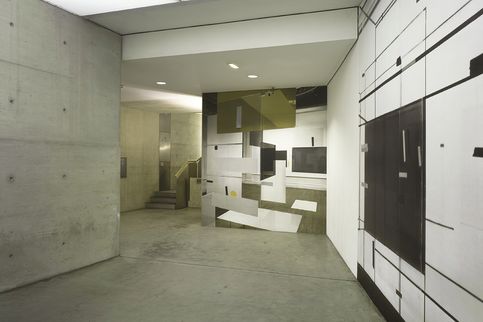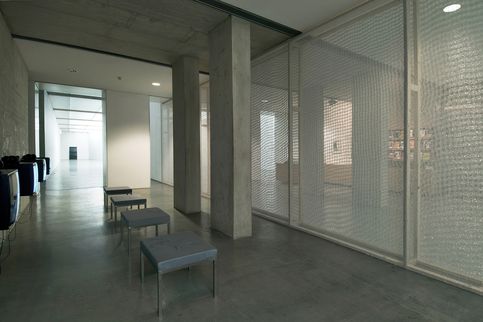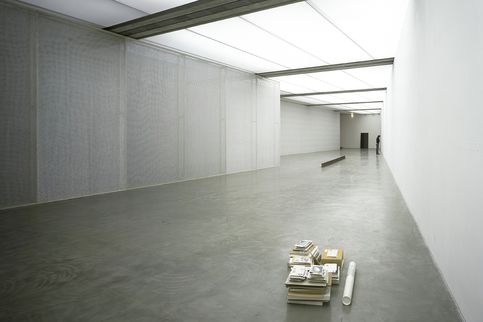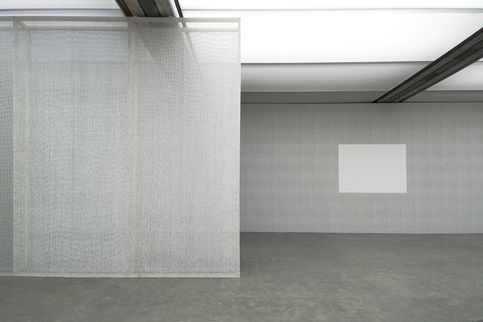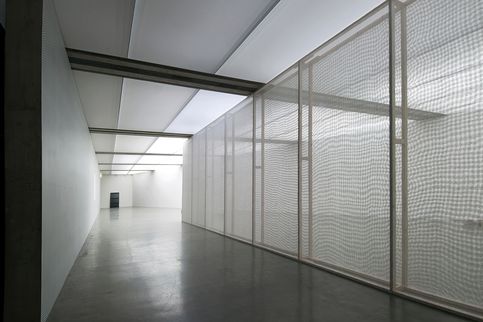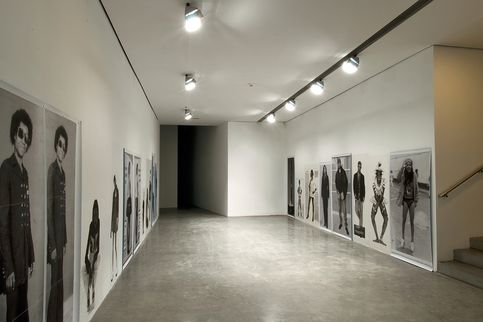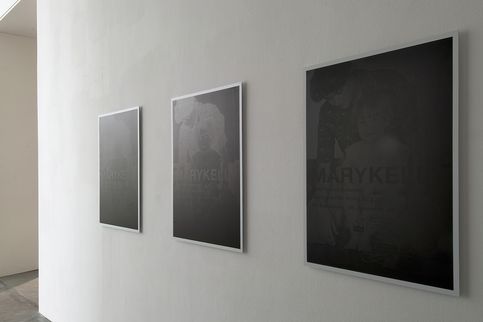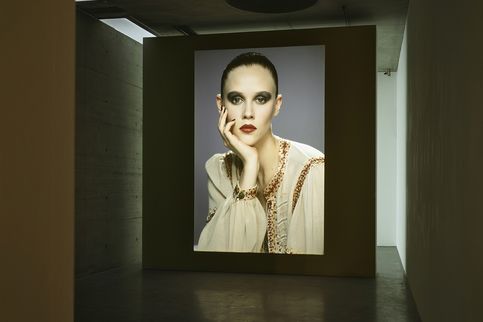unExhibit
Curators: Sabine Folie and Ilse Lafer
Works by Maria Eichhorn, Richard Hamilton, Ann Veronica Janssens, Willem Oorebeek, Karthik Pandian and Mathias Poledna, Joëlle Tuerlinckx, Heimo Zobernig.
With the title "unExhibit," the Generali Foundation gestured toward the legendary 1957 exhibition an Exhibit as it took up the question of the "display as exhibition." The show, which featured works by the international artists Maria Eichhorn, Richard Hamilton, Ann Veronica Janssens, Willem Oorebeek, Karthik Pandian and Mathias Poledna, Joëlle Tuerlinckx, and Heimo Zobernig, not only examined the "display" as a material surface and resonating body for visual and spatial experience, but most importantly also studies artistic methods of not-showing and withdrawing, of "un-exhibiting."
an Exhibit (1957) as a historic point of reference
The point of departure for the exhibition at the Generali Foundation leads back to the year 1957, to a loose association of artists, designers, architects, and theorists called the Independent Group; some of its members were Richard Hamilton, Victor Pasmore, and Lawrence Alloway. The premise of an Exhibit was to show "no objects, no ideas": a show that consisted of colorful panels loosely suspended in space so that visitors could amble freely between them. This formal decision to do without exhibits and make the display itself the subject of the show can be traced back to a series of attempts in modern art to expand painting into space, as in the case of El Lissitzky or Mondrian, or to elevate the display to the status of a subject in itself, as in the case of Frederick Kiesler or Herbert Bayer. an Exhibit is relevant also as a form of interrogation of the institutional space and the roles played by authorship and the position of the beholder: composed of modular elements, the space enables forever different subjective experiences of spatiality as the visitors become authors who "conceive" the space in forever new ways. The translucent panels, finally, marked a play with the experience of transparency and opacity that was of decisive importance to the subject’s perceptions in a world defined by media.
Perception through transparency and opacity
unExibit raised the question in a slightly different way than an Exhibit did: the point was then not only to present "no objects, no ideas" but instead the medium or "display"; it was, rather, to employ different forms of withdrawal, encryption, obfuscation, or obscuration to display the conditions on which media surfaces and their produc-tion of imagery rest. Only this tension between displaying and concealing made it possible to experience the difference between the real and what is imaginary or generated by media.
Transforming the Generali Foundation’s exhibition space
The concrete exhibition space at the Generali Foundation served as the frame of reference for a transformation in which the displacement of spatial coordinates brought about by the use of certain materials—mirrors, wallpapers, lighting, fabrics—as well as techniques of reproduction and surface treatments—lithography, xerography, newspaper clipping, grid patterns— not only evacuated the space, but also recoded it. To this end, the architecture of the exhibition room was reduced to its original state, and no exhibition architecture was built that would have acted as a presentation surface in the service of the art on display: Heimo Zobernig reduplicated the minimalist concrete wall—an essential feature of the existing architecture that marked its longitudinal axis. Turned into a wooden scaffold it was covered with an iridescent fabric resembling construction site safety netting, it was reborn in a glamorous guise, ready for a variety of projections and “mirroring.”
The quotation of the concrete wall reduplicated and displaced in the room was not a mere architectonic intervention; it had implications for the entire constitution of the space and the works of the artists that must stood their ground in it. Willem Oorebeek, by contrast, applied wallpaper bearing a dot matrix to the multiply coded concrete wall. Oorebeek used the matrix dot, whose career culminated in the "Ben-Day dots" of Pop art, in shades of black and gray as the reproductive mark par excellence of the technology of printing.
The loss of authenticity
The loss of authenticity manifested not only as a conse-quence of ongoing reproduction and repetition, as in Willem Oorebeek’s Vertical Club, but paradoxically also by virtue of the heightened visibility of perfect surfaces that engender an utterly impenetrable space, as Karthik Pandian and Mathias Poledna’s 1991 illustrates. Visibility and withdrawal were interdependent, as was also evident in the light projections, “aquariums,” and “laboratory” examinations in the work of Ann Veronica Janssens.
The “exhibited” aspect of models or other motifs from the world of “consumer culture” was first removed from the process of its de-auratization by a process of obfuscation: thus in Willem Oorebeek’s Blackouts, where a media image seems to be altogether effaced by a lithographic process of inking so that it can, upon closer inspec-tion, become truly visible in the first place precisely by virtue of this process of invisibilization. The same holds for Willem Oorebeek and Joëlle Tuerlinckx’s work BLACKOUT-Screen (2005) and for Maria Eichhorn’s Wandbeschriftung Nr. 4 (1992) or her Die ungeöffnete Post des Max Foster (1996).
Other strategies of non-exhibiting, of refusal and withdrawal draw not only on fashion, but also on the cinema—Jean-Luc Godard, Peter Roehr, Georges Perec, Maya Deren—and on literature—Jean Genet, Jorge Luis Borges, Adolfo Bioy Casares, Raymond Roussel—: where things are subject to ongoing reproduction, the double creeps in, and with it the empty, iridescent, overdetermined surface, in equal measure coldly repellent and replete with projections of loss and desire.
